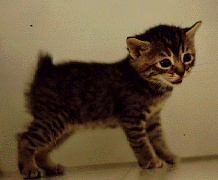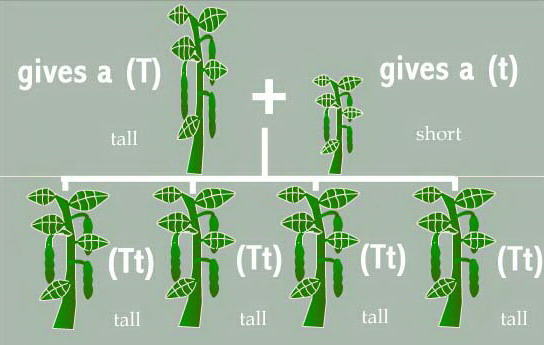Last sections we discussed inheritance where only a single gene was involved. The 3:1 ratio is the basic Mendelian ratio and everything that follows depends upon it.
The obvious next step is to look at a situation where the inheritance of two different inherited characters are studied at the same time, a dihybrid cross.
Again, we learn dihybrid cross by experiments. Let’s see what Mendel did:
He crossed two pure-bred starins of pea plants, one producing only round yellow seeds and the other only wrinkled green seeds.Round seeds are dominant over wrinkled ones; yellow seeds are dominant over green ones. Both phenotypes are determined by one single gene.
(Why did Mendel use the seed characteristics as his focus of study instead of other traits of the pea plants? )
A cross between the two parents produced a F1 generation that consisted only of round yellow seeds. Self-fertilization of F1 yielded F2 generation, the seeds of which showing considerable diversity.
Four different phenotypes could be identified. Of 556 seeds analyzed, Mendel found 315 round yellow seeds, 108 round green seeds, 101 wrinkled yellow seeds and 32 round green seeds. Close to a ratio of 9: 3: 3: 1, which is referred to as the dihybrid ratio.
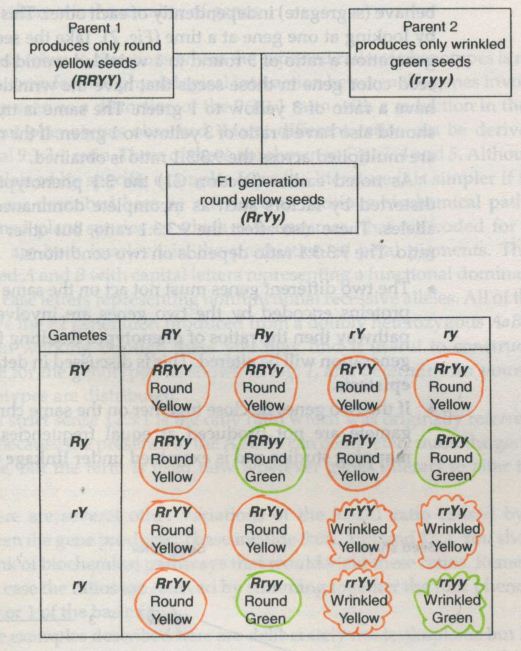
——————————————————————————-
Interestingly, if we only focus on the round/wrinkled phenotype, the ratio of round seeds and wrinkled seeds is 3:1. the monohybrid ratio. Similarly, if we only focus on the yellow/green phenotype, the ratio of yellow seeds and green seeds is the monohybrid ratio as well. Just as we said “The 3:1 ratio is the basic Mendelian ratio and everything that follows depends upon it”
Now I want to introduce a little bit mathematics into this section. Let’s see what happens when we use polynomial multiplication to explain the relationship between 9: 3: 3: 1 and 3:1:
- (yellow: green)× (round: wrinkled)
= (yellow·round): (yellow·wrinkled): (green·round): (green·wrinkled)
- known: yellow: green=3:1; round: wrinkled=3:1
SO: (yellow: green)×(round: wrinkled)=(3:1)×(3:1)
=(3×3):(3×1):(1×3):(1×1)=9:3:3:1
- Therefore, (yellow·round): (yellow·wrinkled): (green·round): (green·wrinkled)=9:3:3:1
- Does this reasoning inspire you? What happens when it comes to a tri-hybrid ratio?
(3:1)×(3:1)×(3:1)=
(3×3×3):(3×3×1):(3×1×3):(3×1×1):(1×3×3):(1×3×1):(1×1×3):(1×1×1)
=27 : 9 : 9 : 9 : 3 : 3 : 3 : 1
See? Quite easy. The ratios for the three groups of phenotypes are simply multiplied across, and the 27 : 9 : 9 : 9 : 3 : 3 : 3 : 1 ratio is obtained.
- SO what happens when it comes to tetra-hybrid, penta-, hex-? What happens when it comes to n-hybrid?
I’m sure the answer is easy for you now, make the n phenotypes multiplied across, and the expected ratio is obtained. In plain mathematics, (3:1)^n
——————————————————————————-As noted before the 3:1 ratio can be distorted by factors such as incomplete dominance or lethal alleles. These also affect the 9:3:3:1 ratio, but other factors can also modify this ratio.
- The two different genes must not act on the same character. For instance, if the proteins encoded by the two genes are involved in the same biochemical pathway then the ratios of phenotypes resulting from the genotypes will be altered.
- If the two genes lie close together on the same chromosome, linkage happens and the ratio won’t be 9:3:3:1 either, as we mentioned in Review of Mendel’s Genetics, the very beginning of our Genetics study.
Testcross
As with the monohybrid cross, it is also possible to conduct a testcross with F1 generation of the dihybrid cross.
![Mendel’s Genetics [5]: The dihybrid cross](https://apbiology.cn/wp-content/uploads/sites/8/2013/07/genetics2.png)
![Mendel’s Genetics [4]: examples of mutiple alleles](https://apbiology.cn/wp-content/uploads/sites/8/2013/12/genetics-4-blood-cell.jpg)
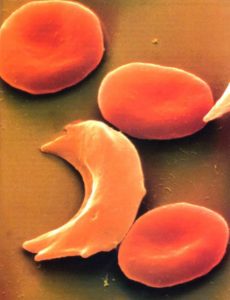


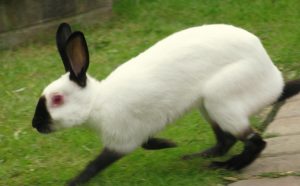
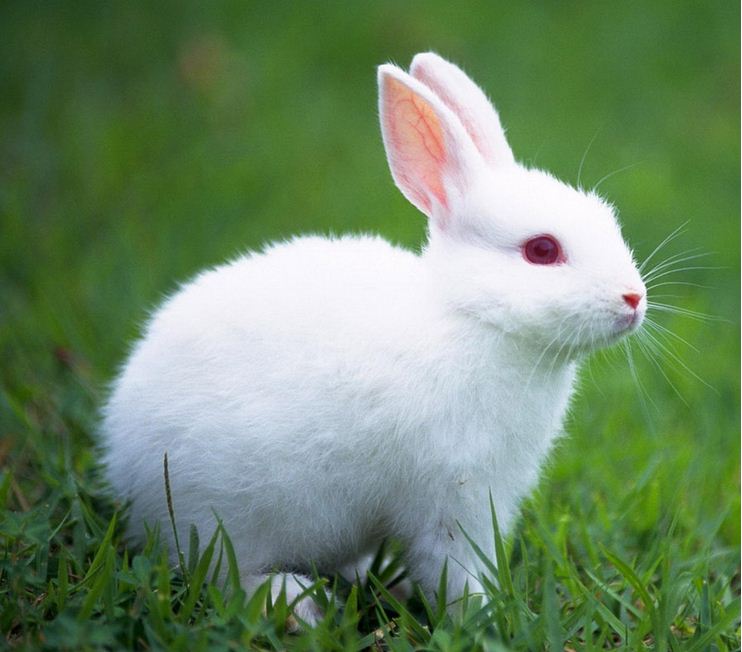
![Mendel’s Genetics[3]: Variations of the 3:1ratio](https://apbiology.cn/wp-content/uploads/sites/8/2013/12/genetics-3-snapdragons.jpg)
